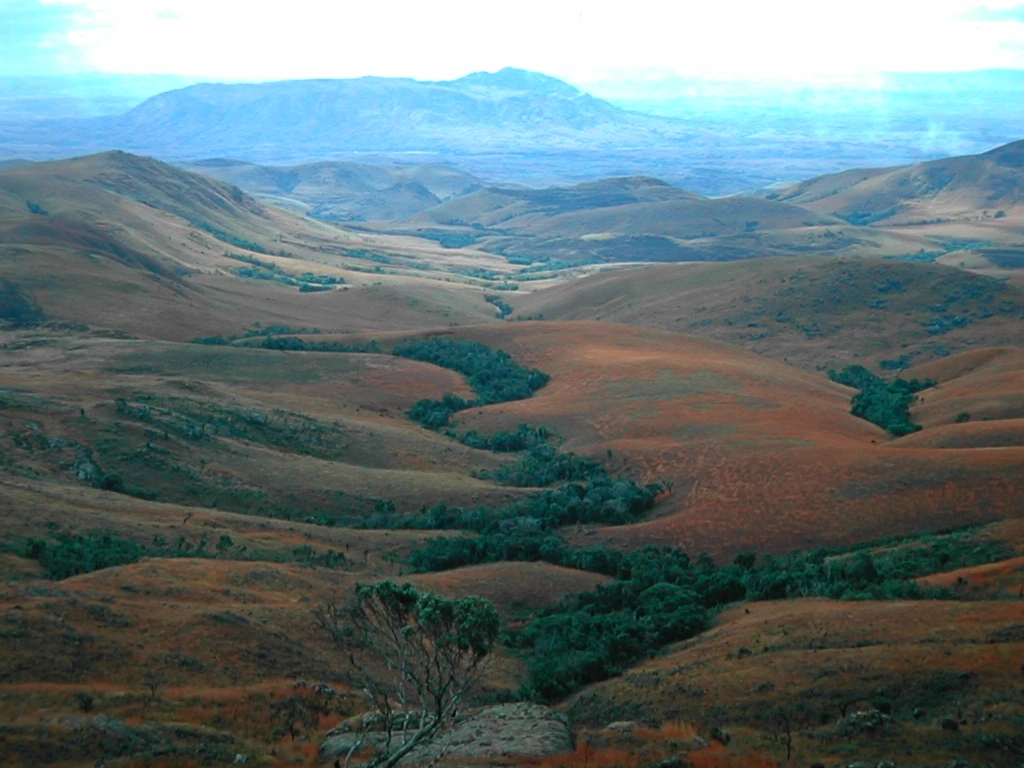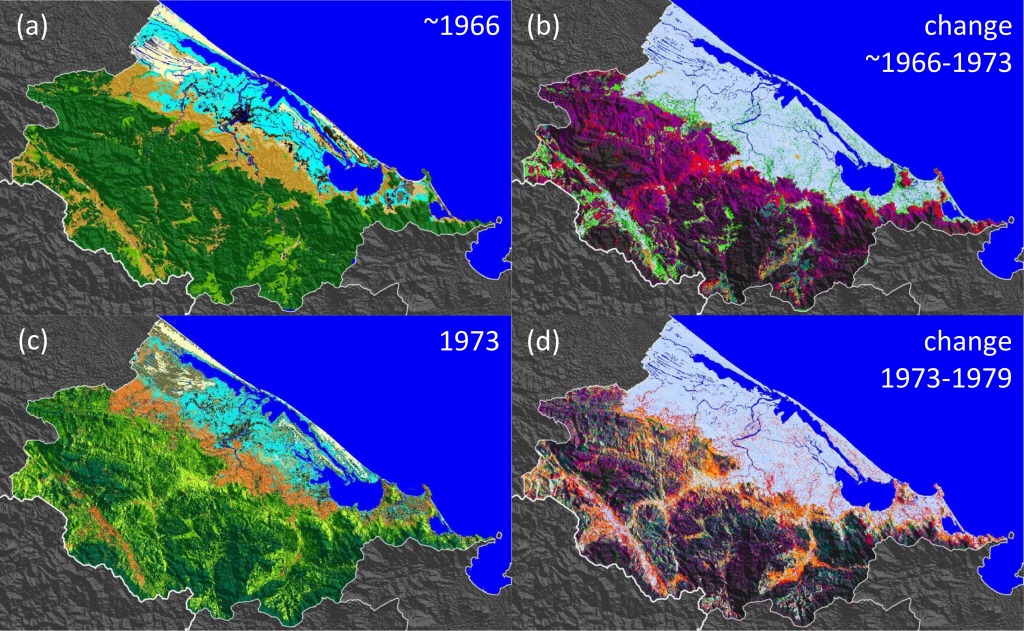Like over a million (!) other viewers, I was captivated by the recent video “What’s inside this crater in Madagascar?” by Christophe Haubursin on Vox. Curiosity, satellite images, internet, a budget for a talented local filmmaker, and excellent production allow the team to explore why a village appears out of nothing fifteen years ago inside a remote broad, circular mountain in central Madagascar. Having spent days and days poring over historical air photos and maps of highland Madagascar for my own research, I palpably felt empathy for Haubursin’s landscape voyeurism. Then imagine my excitement as I realised I’ve been there myself, almost at the village site, on the southern summit of the mountain Ambohiby, in 1999, before it was built!
In this post, I’ll do two things: comment on some photos from my 1999 climb of Ambohiby, and give some leads for people looking to read further on the colonisation of empty lands in highland Madagascar, as I have been researching the settlement of new lands by Betsileo farmers since my masters thesis fieldwork in 1994.




 Posted by christiankull
Posted by christiankull 



